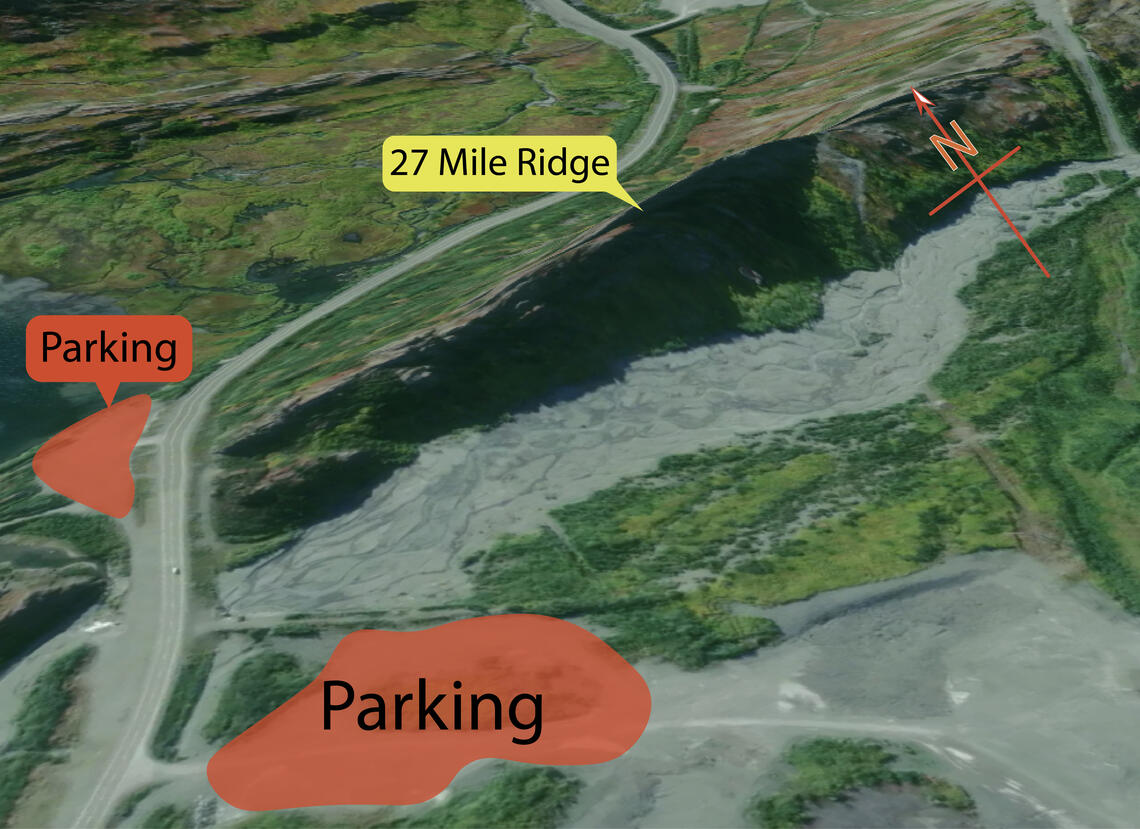Description
|
Pilot Recommendations
P3 skills recommended
In person site intro recommended |
Weather Conditions Wind Direction: 330° - 20° Min: 0mph / Ideal:8-12mph / Max:15mph / Gust:5mph
|
Hazards There are large high tension power lines routed directly behind launch. This is a backcountry site that is flown infrequently. Pilots should only fly here if they are confident in judging conditions appropriate to their skill level Ideal launch conditions can vary greatly during time of year and time of day. Pilots are urged to watch conditions for a while before committing to launch Hazards can include, but are not limited to, water crossings, heinous bushwhacking, animal encounters, weather exposure, extreme terrain and difficult, complex navigation |
|
Restrictions Do not land within 50' of other recreators |
||
The first time I went to Thompson Pass to fly Twenty Seven Mile ridge, a group of us drove right past it thinking there's no ridge around here big enough to soar. Finding nothing bigger down the road, we returned and set up camp in the parking lot across the road at the toe of the ridge. The next two days proved that it doesn't take much of a slope to have a lot of fun soaring.
Twenty Seven Mile Ridge is located at the top of Thompson Pass on the West side of the road. The large field at the base of the ridge is a dense alder jungle swamp in the summer which makes this a winter only flying site.
Snowmobiles are not required to access the launch but they definitely make it easier.
Launch

Weather Considerations
A light flow out of the North is what you want. Be prepared not to fly. Bring your skis, traction kite, speed wing, snowmobiles, or whatever you can think of doing if the winds aren't right at the ridge.
Primarily a ridge soaring site, with a north wind. Normal precautions regarding watching the wind speed apply, to avoid getting blown over the back into the Power Lines.
Recommended wind limitations are:
Wind Direction: 330° - 20°
Min: 0mph / Ideal:8-12mph / Max:15mph / Gust:5mph
Requirements
P3 is the recommended pilot level for this site.
This is primarily a winter site, so skiing skills are also highly recommended.
Hazards
The main hazard is the large high tension power lines routed directly behind launch.
Below are some other hazards that are common to sites everywhere:
- Keep spectators a safe distance away when launching. A distance of 50 feet forward and 30 degrees either side of center of anticipated take off course and 30 feet rearward of starting point target is the recommended clearances.
- Keep spectators safe by choosing flight paths that are no closer than 50 feet from spectators.
- Light aircraft operate everywhere in Alaska. It's your responsibility to maintain visual awareness as required to see and avoid other traffic. Paragliders and hang gliders present a narrow profile to other traffic. Wingovers or spirals are a good way to signal your presence when aircraft are approaching.
- Avoid landing closer to powerlines towers and other obstacles than necessary. The recommended minimum clearance from powerlines is 100ft.
WARNING: The descriptions of typical flying conditions listed in this Site Guide reflect the experience of the authors of the guide. The conditions that you encounter at the site may differ, sometimes substantially, from those described. These descriptions may not be relevant to the possible experience of any other pilot, particularly one who is relatively inexperienced or new to the Site.


